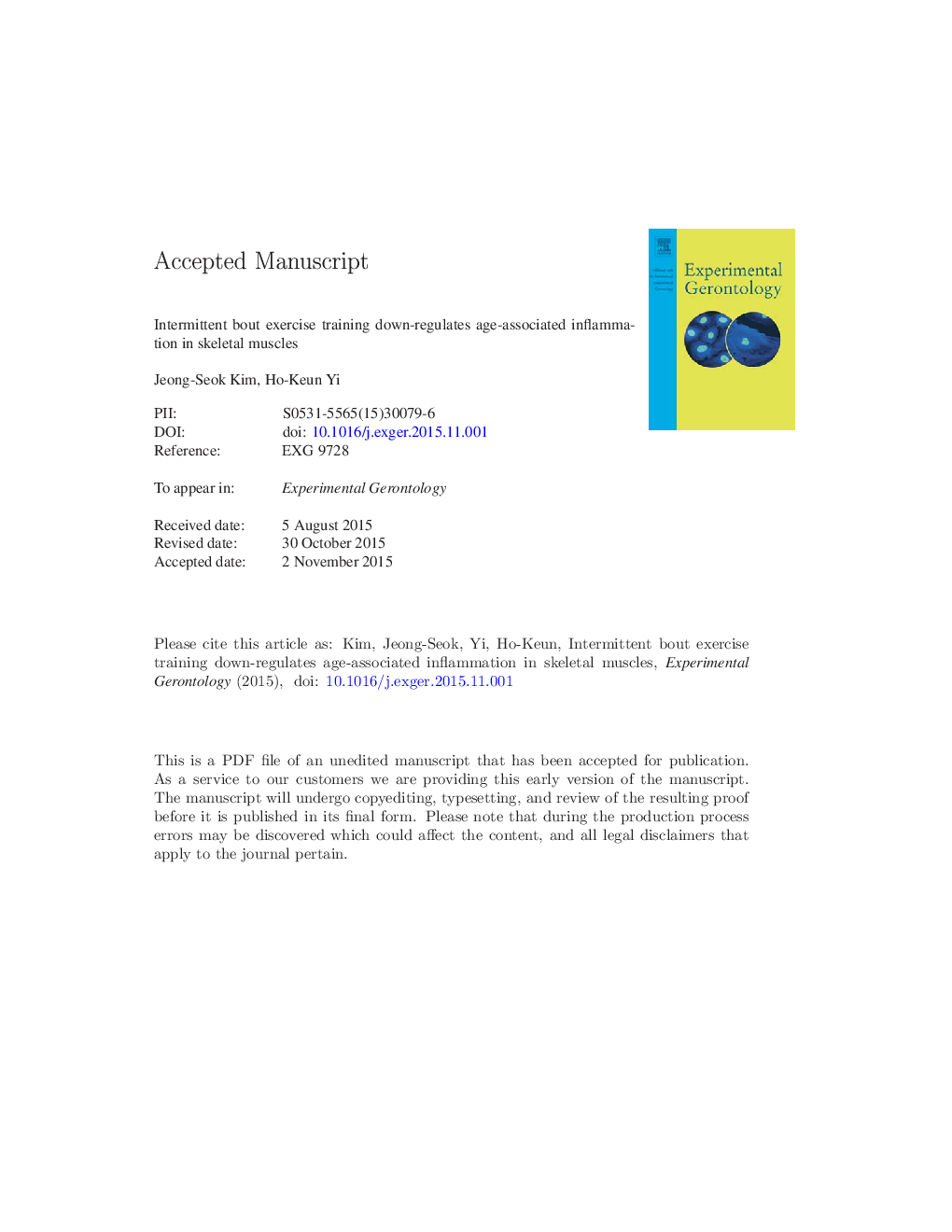| Article ID | Journal | Published Year | Pages | File Type |
|---|---|---|---|---|
| 8263089 | Experimental Gerontology | 2015 | 40 Pages |
Abstract
Aging is characterized by the progressive decline in mass and function of the skeletal muscle along with increased susceptibility to inflammation, oxidative stress, and atrophy. In this study, we investigate the effect of intermittent bout and single bout exercise training on inflammatory molecules in young (3 months) and old (22 months) male Sprague-Dawley rats. The rats were divided into 6 groups. Young and old rats were randomly assigned for control and two exercise training groups, single bout (S type): 30 min/day, 5 days/week for 6 weeks and intermittent bout (I type): three times for 10 min/day, 5 days/week for 6 weeks respectively. The exercise training was carried out by a treadmill at a speed of 15 m/min (young) or 10 m/min (old) with a slope of 5°. After 48 h of the final exercise bout, muscle samples were collected for biochemical assay. I type exercise training reduced the serum levels of inflammatory molecules such as interleukin-1β (IL-1β), tumor necrosis factor-alpha (TNF-α), interleukin-6 (IL-6), and malondialdehyde (MDA) in old rats. By contrast, interleukin-4 (IL-4) and superoxide dismutase (SOD) were elevated. Consequently in skeletal muscles, inducible nitric oxide synthase (iNOS) and cyclooxygenase-2 (COX-2) were decreased significantly in the old group of I type. However, the matrix metalloproteinase-2 (MMP-2) level had no positive effects. Also, phosphorylation of mammalian target of rapamycin (p-mTOR) and myogenic differentiation (MyoD) were increased markedly in S and I types of old rats. These results suggest that I type exercise training appears more effective to reduce age-associated inflammatory molecules, and may recommend in regulating against chronic complicated disease induced by aging.
Related Topics
Life Sciences
Biochemistry, Genetics and Molecular Biology
Ageing
Authors
Jeong-Seok Kim, Ho-Keun Yi,
